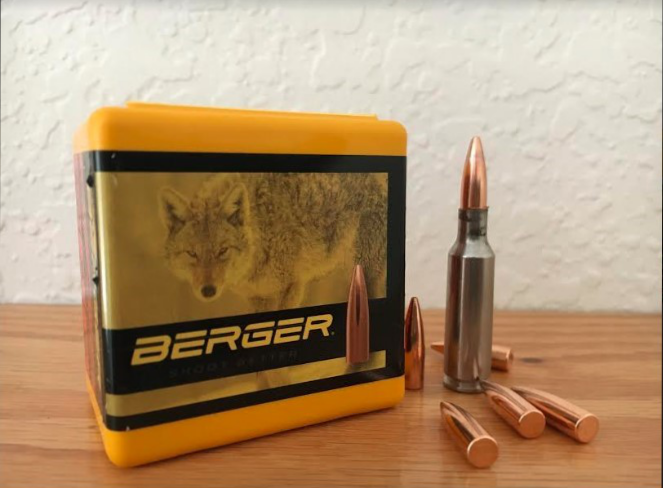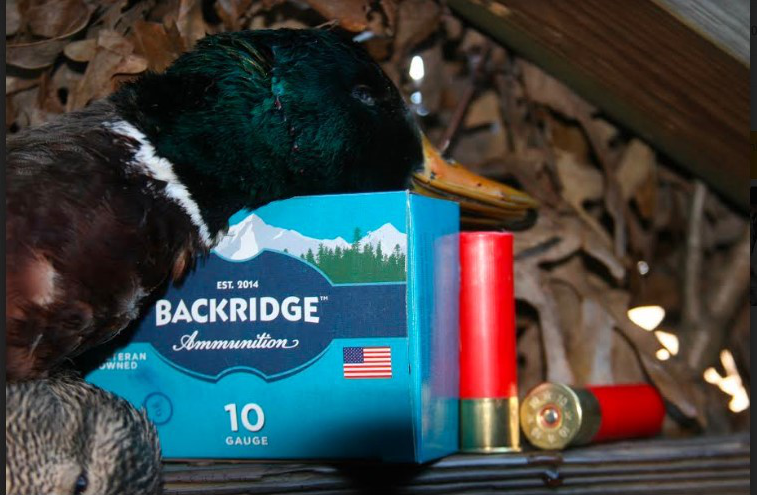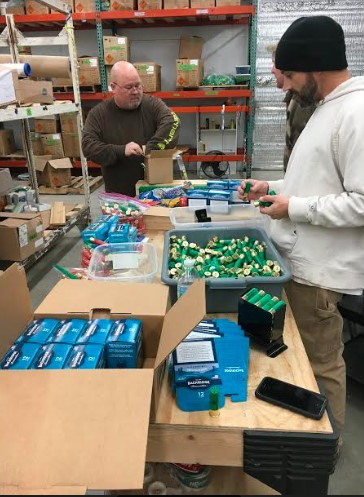Written by Loyal Brezny

Both components and finished ammunition need to be correctly stored
There is a major misconception regarding firearms ammunition that it will get old and become useless after a period of time, and also that in a fire the product will cause massive explosions. Neither of these old wives tales is correct, as well as a number of other myths regarding ammunition.
Shelf life for storing ammo
From the day a round of ammunition is manufactured, it becomes a stored element that can sit on a warehouse shelf for many months. After it is sold and in a home or shop, another round of storage results, and in this case the length of time can and often will increase to a period consisting of many years.
I have stored ammunition in my shop for more than 25 years, and I have some Russian 7.62X54 that is dated from the close of WW I. In fact, I shot some of the stuff to 800 yards last winter and did not experience either a failure or a slow round out of several batches that had been kept in an airtight storage container.

Always label boxed ammunition if different to that on its commercial printing.
Storage conditions
In general, ammo storage should address conditions in the storage area, such as room temperature and humidity. These two elements can cause ammunition to deteriorate to some degree, especially with long-term storage.
This goes for old-style paper shot-shells that are almost out of production today. I say “almost”, because some clay target shooters request them from custom loaders, and at least one factory still offers them. So I can’t say all of them have left the room, as such.
Store ammo in the cool and dry
In all cases, try and store ammo in a cool, dry place. In some parts of the country, dry is natural. I live in the South Dakota Black Hills on the northern slope. It is arid up here with a base humidity of about 18 percent. That’s dry, and it shows regarding my ammunition storage.
I store thousands of rounds for commercial testing and warm target shooting, and some of this is very old, while others are state of the art. No difference in performance regarding detonation, or performance down-range, save for the specific load and development history.
Using dehumidifiers
Conversely, when I lived in the state of Minnesota many years ago, I had to contend with very high humidity almost all year round. I mean, 80 percent and more, with even greater percentages in my storage areas at times.
In this case, dehumidifiers are a must or your ammunition will suffer some damage, or even total loss over time.
Metallic ammunition, like rifle cartridges, is not as susceptible to damage from almost any source save for salt water. The sealed primers on military and crimped bullets into case necks make these products damage-safe at an almost 100% level.

Correctly boxed ammo can save a lot of trouble and is safer in the long run
Store in ammo boxes
Loose components, such as in primers, and power can present different problems in that these products if not well sealed in airtight containers can become subject to varied storage conditions.
For example, I had a 1-pound can of military 4350 stored in an old coffee can and over several years it burned through the soft material and the bottom fell out of the can when I attempted to move it to another location. After that, I used heavy sealed cardboard cans and polymer material storage containers for bulk powers.

Small custom sales ammunition factory (Backridge Ammunition) has workers packing boxes for shipment. This ammo can be stored, if done correctly, for many years
Storing primers
Primers are also an area of concern. Never dump them into a container in bulk. These small units must be separated into individual cells. Rubbing them together or striking them can cause them to explode. Yes, primers are nitroglycerine-based, and will explode. En masse, the situation can be catastrophic.
Storing ammo in proper containers is another element to consider. I like to use military ammo boxes when possible for large amounts of loose ammo, or special ammunition in large qualities that is already boxed.
Keep ammo boxed correctly and marked as such. Getting the wrong cartridge mixed into the wrong gun will not turn out well, to be sure.
Again, when storing for long periods of time, use plastic or metal boxes that are well labeled. You would be surprised how easy it is to forget exactly what is in a stored box of ammo that has not been used for several years.
Safe storage
Because modern cartridge propellant is not an explosive, don’t fear an explosion, even in a fire. Nitrocellulose is the basis in much of this propellant and, as such, even if piled up raw and burned it will flash and burn hot for a very short time, but not explode as many tend to believe.
However, black powder of old, such as the stuff muzzle-loaders use at times, is an explosive. It will explode if set off by static electricity or a match. No containment is necessary, even in the loose, raw form.
The solution is to store black power away from other combustible materials, and take care in areas of static electricity, open flames, or sparks.
Ammo access
The general rules regarding ammunition are to store away from guns, and keep under lock and key in a separate area that children have no access to, because if they can at all, they will. Old rule that fits the deal here well.
Remember, many states in the USA require special handling of ammunition around children. Make a mistake and the results are too horrible to even contemplate.
Author Bio:
L.P.Brezny has been writing and reviewing products as well as how to projects for the past 50 years. He has authored four books on shooting with three on long range, and one covering shotgunning.(Amazon) With 26 years in a metro police department as a street officer and the rank of SGT / training. L.P. has covered all the bases regarding weapons and street survival on Hunting Mark, Read their most popular guide on best AR 15 scopes…
***********************************************************************
We are an affiliate of Amazon.com, which means we received a small commission if you click through one of our Amazon links when you shop, at totally no cost to you. This helps keep the lights on at the blog. Thanks!


